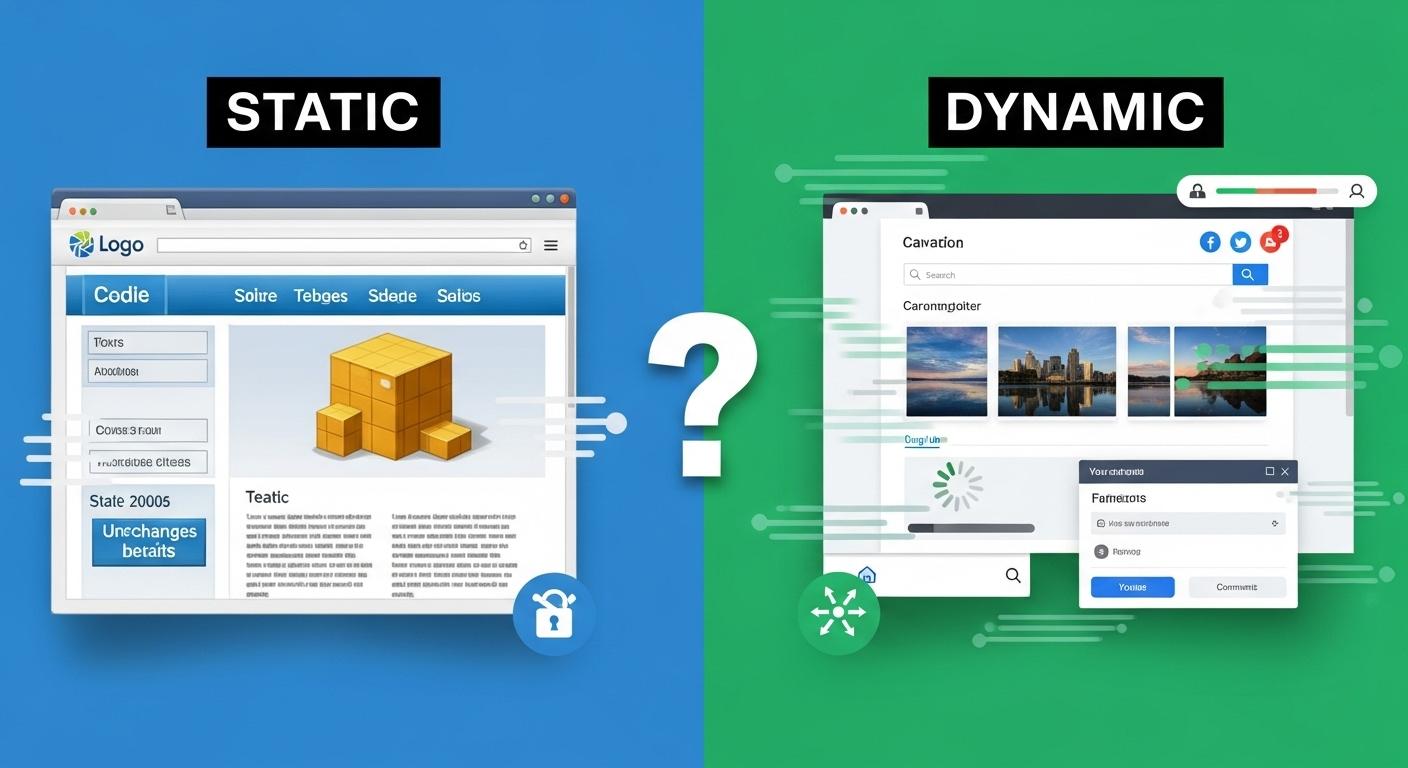Static vs Dynamic Websites – Which One is Right for Your Business?
-
Home
-
Technology Reviews
-
Static vs Dynamic Websites – Which One is Right for Your Business?

Static vs Dynamic Websites – Which One is Right for Your Business?
In today’s digital-first world, your website is often the first impression potential customers have of your business. One of the most important decisions you’ll make while building a website is choosing between a static or dynamic site. Both options have unique advantages, but the right choice depends on your business goals, budget, and the type of online experience you want to deliver.

What is a Static Website?
A static website consists of fixed web pages with content that doesn’t change unless a developer manually updates the code. These sites are built using basic technologies like HTML, CSS, and JavaScript, and are ideal for businesses that don’t need frequent updates.
Key features of static websites:
- Fast loading speed due to simple structure
- Low cost to develop and maintain
- Great for small businesses, portfolios, and informational websites
- Limited functionality (no databases, limited interactivity)
What is a Dynamic Website?
A dynamic website is interactive and changes content automatically based on user actions or data. It uses technologies like PHP, Python, Node.js, and databases (MySQL, MongoDB, etc.) to deliver personalized and engaging experiences.
Key features of dynamic websites:
- Content can be updated through a CMS (like WordPress, Drupal, or custom panels)
- Highly interactive and user-friendly
- Scalable for growing businesses
- Requires higher investment and ongoing maintenance
Static vs Dynamic Websites: A Quick Comparison
| Aspect | Static Website | Dynamic Website |
|---|---|---|
| Cost | Lower initial cost | Higher development & maintenance cost |
| Speed | Very fast (simple coding) | Slightly slower due to database queries |
| Content Updates | Manual, requires coding | Easy via CMS or admin panel |
| User Experience | Basic and limited interactivity | Personalized, interactive, engaging |
| Best For | Small businesses, portfolios, landing pages | E-commerce, blogs, corporate sites, portals |
Which One is Right for Your Business?
The decision between a static and dynamic website depends on your business needs:
- Choose a static website if:
- You run a small business or portfolio website.
- Your content is rarely updated.
- You want a budget-friendly and fast-loading solution.
- Choose a dynamic website if:
- You run an e-commerce store, blog, or membership site.
- You need regular content updates without technical help.
- You want a scalable and interactive platform.
Final Thoughts
Both static and dynamic websites can serve businesses effectively when aligned with the right objectives. If speed, simplicity, and low cost are your priorities, a static website is the way to go. However, if your business demands interactivity, frequent updates, and growth potential, a dynamic website will be the better investment.
Before making your choice, assess your long-term goals, budget, and target audience expectations. The right website is not just about design—it’s about delivering a seamless digital experience that helps your business grow.
Share this post:
Related Posts

Your website is the digital face of your business. While ready-made templates may seem like a quick...


